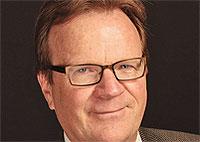Ford Motor Co. began a new era today with a ceremony marking the start of production of the Ford Transit van at its Kansas City Assembly Plant in Claycomo, Mo.
The Transit will replace the venerable Ford E-series van, first sold in 1961 as the Ford Econoline. Ford will continue making the E series for awhile during the 2014 calendar year as it ramps up Transit production.
Ford has invested $1.1 billion and added 2,000 new jobs to the Kansas City Assembly Plant. Ford said it has reached 75 percent of its goal of creating 12,000 hourly jobs in the U.S. by 2015.
“Our investment in Kansas City Assembly Plant for Transit production is about delivering world-class commercial vans for a new generation of commercial customers,” said Joe Hinrichs, Ford president of the Americas, in a statement.
The Transit marks an ambitious effort by Ford to expand its commercial vehicle business with a versatile van that was developed in Europe in 1965. The Transit is now sold in 118 countries. In North America, Ford will offer the Transit van and wagon in three body lengths, two wheelbases and three roof heights along with chassis cab and cutaway versions. The Transit will come in two trim levels: XL and XLT.
The Transit comes with a standard 3.7-liter V-6 engine, and the same 3.5-liter EcoBoost engine used in the F-150 pickup and a 3.2-liter Power Stroke diesel engine. All engines are mated to a six-speed automatic transmission in a rear-wheel-drive configuration.
The high-roof version of the Transit -- with 81.5 inches of maximum interior cargo height -- has enough headroom for a person 6 feet, 8 inches tall to stand upright.
The new Transit van offers as much as 487 cubic feet of cargo space and 4,650 pounds of maximum payload capacity. The Transit van delivers a maximum towing capacity of 7,600 pounds, Ford says.
In some configurations, Transit offers as much as much as 75 percent more cargo space than the biggest version of the outgoing E series, Ford claims.
The Transit gives Ford a modern commercial van to go up against the likes of the Mercedes-Benz Sprinter. Because of the variety of wheelbases, body lengths and roof heights, it also presents dealers with a challenge in figuring out which configurations to stock.
In addition to Transit, Ford’s Kansas City Assembly Plant produces regular, super and crew cab versions of Ford F-150. The plant employs 4,878 hourly workers on three crews. The third crew was added in the third quarter of 2013.
Ford will begin production of the next generation, all-aluminum F-150 in the first quarter of 2015.





